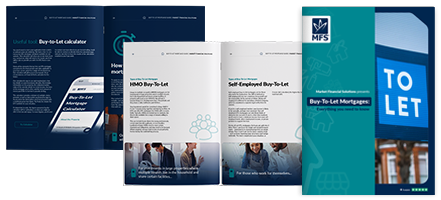Market Financial Solutions are a bridging loan and buy-to-let mortgage provider and are not legal, financial, investment or tax advisers. This document is for informational purposes only and does not, and should not be considered, to constitute legal, financial, investment or tax advice or be relied upon by any person to make a legal, financial, investment or tax decision. Therefore, Investors are encouraged to seek appropriate professional advice. The information in this content is correct at time of writing.

The buy-to-let urban vs rural question has become more complicated in recent years. Few things affected the property market like the pandemic did. Not only did the industry have to respond to an upended set of priorities, but tastes among the nation’s workers changed seemingly overnight.
Suddenly, tenants and buyers found they could work from anywhere. City dwellers squeezed into tiny flats started to dream about rolling hills and leafy gardens. We explored these shifting priorities in our 2021 Homebuyer Wishlist report.
Our research found that outdoor space, larger square footage, and bigger gardens were the key priorities for people as we moved through the pandemic. To find these features, many looked to rural and urban areas.
But, the property market can move quickly and now, we’re seeing somewhat of a reversal in tastes and desirability. Many of those who abandoned city life for greener pastures ended up regretting their decision, while a toughening stance on flexible working has forced some workers to move back closer to their offices.
All this can make it tricky for investors. To help, this blog will break down some of the recent developments that have occurred in the market, allowing landlords to get to grips with their options.
Defining Buy-to-Let Urban vs. Rural Options
Before progressing however, we should be clear on the differences between urban and rural property. Landlords musing the buy-to-let urban vs rural question should be able to clearly differentiate between the two classes.
Officially, the Government defines rural areas as those that fall outside of settlements with more than a 10,000-resident population[1]. Small villages being an obvious example. Urban areas include larger cities and towns, or suburbs which grant commutable access to a major city. For instance, Surrey has several suburbs which provide easy access to London.
Both will have their pros and cons, and appeal to renters in varying circumstances. Retirees looking for a slower pace of life may be more tempted by a rural location. Whereas a renter moving up in their career may want a bigger home in a commuter belt that still grants easy access to their office.
Recent Developments
As Covid-19 restrictions were lifted, flexible working largely remained intact. Those who could still largely work from home moved to rural hotspots in droves. Locations such as the Cotswolds and Yorkshire[2] proved especially popular.
Localised economies were dramatically impacted by these changes. Analysis of mobile phone data revealed that small towns, suburbs and seaside locations saw footfall rise by 50% in mid-2023[3]. Spending in towns outside the traditional commuter belts also jumped.
But, much of this growth now appears circumstantial or temporary. We are now seeing a pushback (at least from employers) on the working from home culture that emerged form the pandemic.
Flexible working, some argue, is making the UK unproductive[4], and many workplaces and employers are calling for their employees to come back to the office[5]. In fact, across Europe, the proportion of companies reporting average building utilisation of 41-80% rose to 61% in mid-2024, up from 48% in 2023[6].
Also, many Londoners specifically underestimated how much they cherished the perks of living in a big city. Many house hunters are heading back to the capital as they tire of an apparent ‘relatively slow infrastructure, a lack of opportunities, or excitement’[7].
So, what does this mean for residential demand across the market? Do we need to review the buy-to-let urban vs rural question in light of these changes? Let’s dive into the details to get a better idea of where we stand.

Rural Locations
Despite a recent reversal in fortunes, rural locations may still offer potential for investors. Even now, rural property hotspots are outpacing cities for house price growth.
In England’s rural areas, the average house price experienced 1% growth over the last 12 months, according to Yopa[8]. Meanwhile, the nation’s urban areas saw prices drop by an average of 2.1%. In fact, Nationwide found that house price growth in rural areas has outpaced that of their urban counterparts for the last five years or so[9].
Also, house price growth in some rural locations has risen so dramatically that it’s pushed locals into the rental market[10]. There may be opportunity in targeting this emerging market.
But, it cannot be ignored that the rural market has faced a bit of a downturn in recent months. Home sellers in what were once rural hotspots are struggling to sell their properties as the market cools[11]. And with 63% of UK CEOs predicting that a full return to in-office working will arrive by as early as 2026[12], the pressure to sell up in the countryside may only rise from here.
Urban Options
Urban properties can also present their own challenges. The entry costs may be high, given their usual proximity to large cities and economic hubs. Competition may also be particularly tough in urban areas.
Still, the outlook for the urban property market looks promising. Rental growth in commuter belt locations are outperforming their wider regions, according to Zoopla[13]. This is especially true in Northern regions, with strong annual growth in Rochdale (14.4%), Oadby and Wigston (12.4%), and West Lancashire (12.3%).
Further growth could be on the way too. With Labour’s plans to get building on greenbelt land[14], much of which is situated around London and other cities, we could be in store for a “gold rush” of development over the coming months. Location wise, Bradford, Blackpool, Rochdale, Plymouth, and Leicester could emerge as the key urban hotspots for 2024, according to OnTheMarket[15].
Looking Ahead
Ultimately, the answer to the question of buy-to-let urban vs rural will vary between investors. An investor’s individual circumstances will be the determining factor in what is the right investment for them.
Looking at the available data can help narrow the options, however. Currently, according to the latest official data[16], around 10 million people live in rural areas, but the rural population is growing at a slower rate than the urban population. What’s more, the more rural the area, the older the average age of the local population, and this average age is increasing.
Perhaps rural locations are best suited for targeting older generations, whereas urban spots can be targeted for younger families. Indeed, 68% of the world’s population is projected to live in urban areas by 2050, according to the UN[17].
All told, in England and Wales, London, Cardiff, and Preston saw the highest rates of population growth between mid-2022 and mid-2023[18]. The future may be urban rather than rural.
We must stress however that we are not financial advisors. We will never advice you on where to invest, or what assets to target. For help with this, investors will need to turn to qualified professionals who can provide expert guidance.
Where investors have figured what they’re going to target though, we will be there with tailored funding to help them along their way.
The Complete Guide to
Buy-to-Let Mortgages
Everything you need to know
- Fundamentals
- Different mortgage types
- Useful tools
- Industry stats & more
[1] https://www.gov.uk/government/collections/rural-urban-classification
[2] https://inews.co.uk/news/homeowners-move-cities-buyers-look-further-new-research-1558424?ico=in-line_link
[3] https://workplaceinsight.net/city-dwellers-take-advantage-of-hybrid-working-to-relocate-to-suburbs-towns-and-countryside/
[4] https://www.spectator.co.uk/article/working-from-home-wont-fix-britains-productivity/
[5] https://www.ft.com/content/1807d78d-b67d-44f4-9eb2-55253a3c3c2e
[6] https://workplaceinsight.net/office-attendance-levels-continue-to-rise-across-europe/
[7] https://www.dailymail.co.uk/news/article-13390965/London-property-market-countryside-Rightmove-Foxtons-Hamptons.html
[8] https://www.propertyreporter.co.uk/rural-property-hotspots-continue-to-outpace-cities-for-house-price-growth.html
[9] https://www.nationwidehousepriceindex.co.uk/reports/rural-areas-saw-strongest-house-price-growth-over-last-five-years
[10] https://www.bbc.co.uk/news/science-environment-68637698
[11] https://www.ft.com/content/40dd631a-51cf-4816-895b-d36479f30d04
[12] https://www.raconteur.net/future-of-work/boots-five-day-office-return
[13] https://www.savills.co.uk/research_articles/229130/363838-0
[14] https://www.telegraph.co.uk/business/2024/07/13/developers-gear-up-green-belt-gold-rush/
[15] https://www.dailymail.co.uk/property/article-13627435/Top-10-urban-property-hotspots-Bradford-Blackpool-lead-pack.html
[16] https://www.gov.uk/government/statistics/key-findings-statistical-digest-of-rural-england/key-findings-statistical-digest-of-rural-england#:~:text=12%20million%20people%20lived%20in,21.3%25%20of%20the%20England%20population
[17] https://www.un.org/uk/desa/68-world-population-projected-live-urban-areas-2050-says-un
[18] https://uk.news.yahoo.com/biggest-population-increase-75-years-133213239.html






